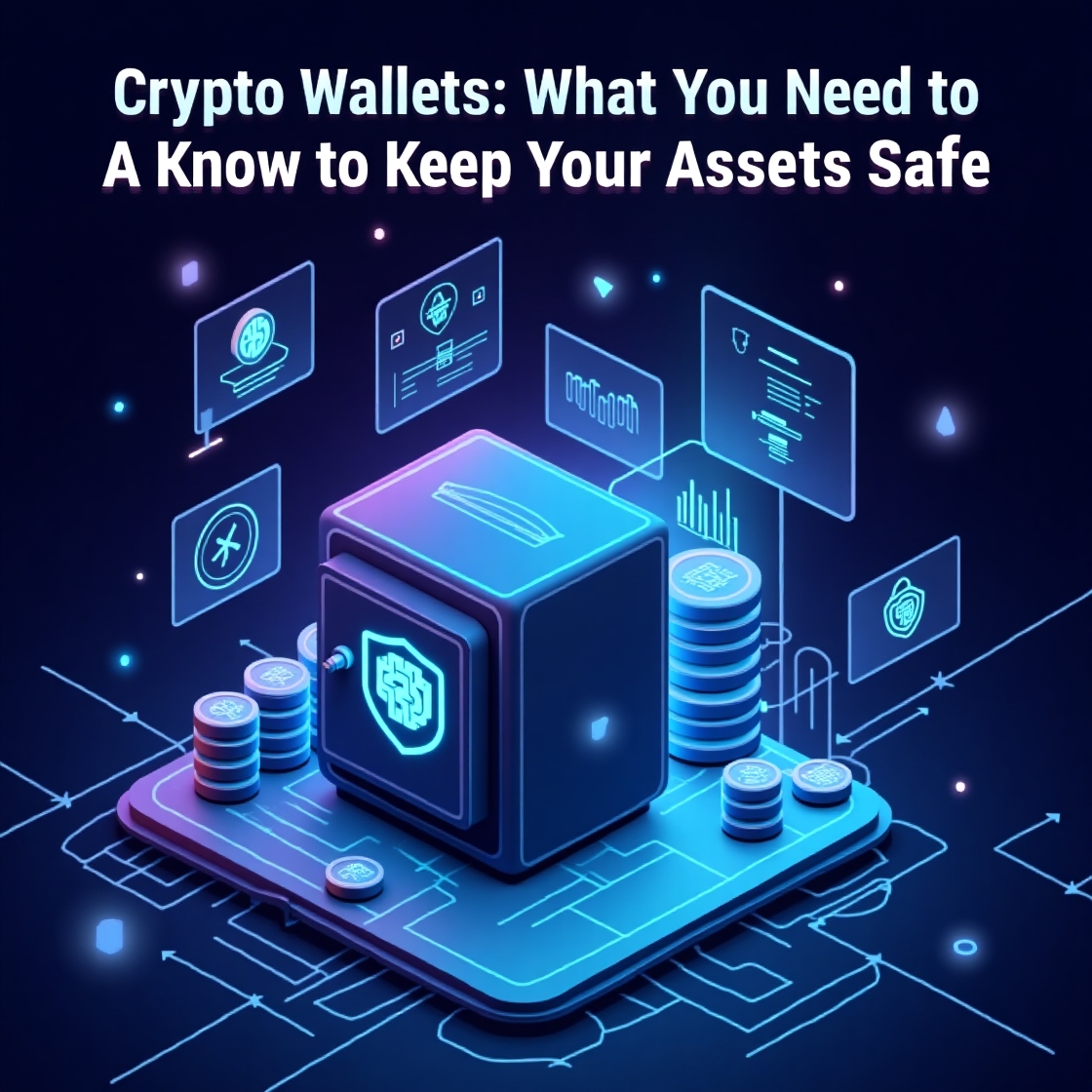Crypto Wallets: What You Need to Know to Keep Your Assets Safe
In the world of cryptocurrencies, security is everything. As interest in digital assets like Bitcoin, Ethereum, and altcoins continues to grow, so does the risk of theft, loss, and fraud. Crypto wallets are essential tools for anyone looking to keep their assets secure and under control. But not all wallets are created equal, and knowing how they work—and how to protect them—can make the difference between safe investing and serious loss.
What Is a Crypto Wallet?
A crypto wallet is a device, software, or online service that stores your public and private keys. These keys allow you to send and receive cryptocurrencies, as well as monitor your balance. Unlike a physical wallet that holds cash or coins, a crypto wallet doesn’t actually store the cryptocurrencies themselves. Instead, it manages access to your funds, which live on the blockchain.
The keys are the heart of wallet security. Your public key is like your account number—you can share it freely so people can send you funds. Your private key, however, is like your password. If someone gets access to it, they can control your assets with no restrictions.
Types of Crypto Wallets
Crypto wallets fall into two main categories: hot wallets and cold wallets. Each has its own pros and cons in terms of convenience and security.
Hot Wallets
Hot wallets are connected to the internet. They’re ideal for daily transactions due to their ease of access, but they are also more vulnerable to online attacks.
Common types of hot wallets:
- Mobile wallets: Apps like Trust Wallet or MetaMask.
- Desktop wallets: Programs like Exodus or Electrum.
- Web wallets: Browser-accessible wallets provided by platforms like Coinbase or Binance.
Pros:
- Easy and quick access to funds.
- User-friendly, especially for beginners.
- Great for frequent transactions.
Cons:
- Higher risk of hacking, phishing, and malware.
- Dependent on device and internet security.
Cold Wallets
Cold wallets store your private keys completely offline. They are considered the safest option for storing large amounts of crypto or long-term holdings.
Common types of cold wallets:
- Hardware wallets: Physical devices like Ledger Nano S/X or Trezor.
- Paper wallets: Printed documents containing your private and public keys.
Pros:
- Excellent protection from online threats.
- Not exposed to constant internet risks.
Cons:
- Less convenient for quick access or regular use.
- Risk of physical loss or damage if not stored properly.
Best Practices to Keep Your Wallet Safe
No matter what type of wallet you use, following best security practices is key to protecting your crypto.
1. Secure Your Private Key and Recovery Phrase
Most wallets will provide a recovery phrase (also called a seed phrase)—usually a set of 12 or 24 words—that can be used to restore your wallet. Write it down on paper, never store it digitally (unless encrypted), and keep it in a secure location. Consider making multiple copies and storing them in different places.
2. Enable Two-Factor Authentication (2FA)
If you’re using an exchange wallet or web wallet, always activate 2FA. This adds an extra layer of protection beyond just your password, especially important for preventing unauthorized logins.
3. Avoid Public Wi-Fi
Don’t access your wallet using open or public Wi-Fi networks. These networks can be exploited by hackers to intercept your credentials and other sensitive data.
4. Keep Your Software Updated
Always use the latest version of your wallet software or app. Updates often include crucial security patches that fix known vulnerabilities.
5. Beware of Phishing Attempts
Crypto scams are rampant. Be cautious with emails, messages, or websites that ask for your private key or seed phrase. No legitimate wallet or service will ever ask for these details.
Which Wallet Is Right for You?
Choosing the right wallet depends on your needs and level of experience. If you’re just getting started and making small transactions, a reputable hot wallet might be enough. If you’re holding larger sums or planning long-term storage, a cold wallet is a safer bet.
Many seasoned investors use a hybrid approach: they keep a small amount of crypto in a hot wallet for daily use, while storing the majority in a cold wallet for maximum security. It’s all about finding a balance between convenience and protection.
Conclusion
Cryptocurrencies offer full control over your finances, but with great power comes great responsibility. Using the right crypto wallet—and securing it properly—can help you avoid theft, hacks, and irreversible loss. Remember the golden rule in crypto:
“Not your keys, not your coins.”
By understanding how wallets work and taking the right precautions, you can safely navigate the world of digital assets and invest with confidence.




Post Comment